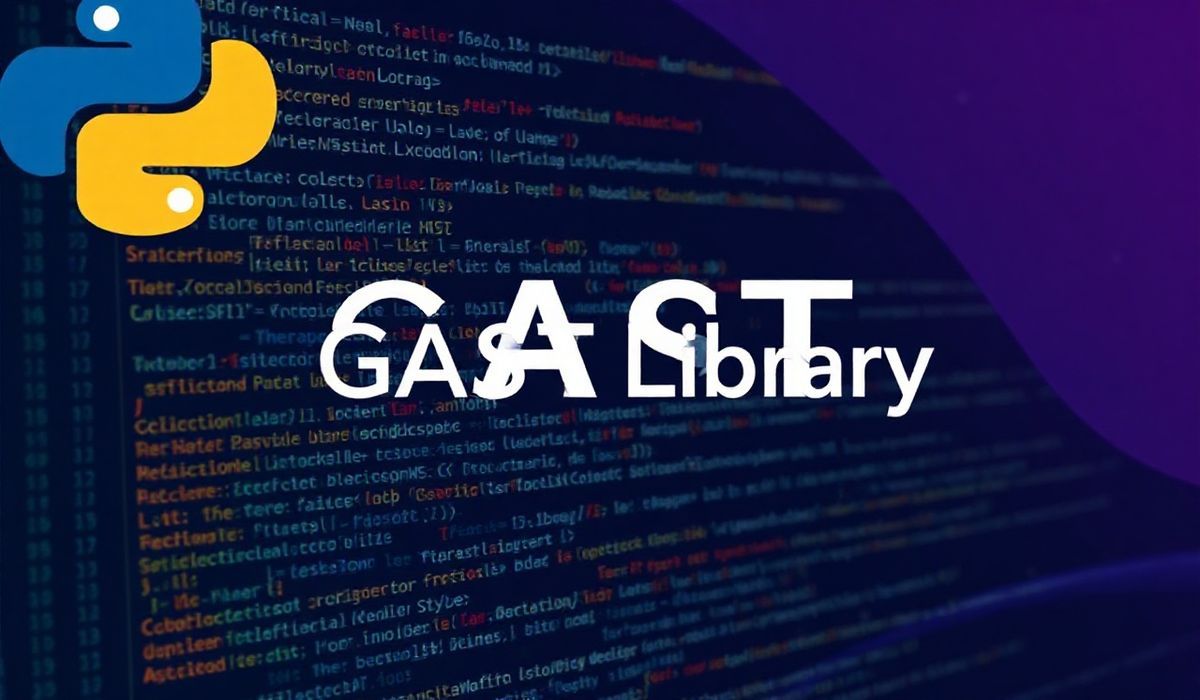Introduction to GAST: Python’s Abstract Syntax Tree Library
The GAST library (Generic Abstract Syntax Trees for Python) is a powerful Python module that provides functionality for analyzing, modifying, and transforming Python code structure at the abstract syntax tree (AST) level. If you work in areas such as code analysis, static analysis, tooling development, or program transformation, GAST is indispensable. In this guide, we will dive into dozens of its useful APIs with examples.
What is GAST?
GAST is a Python library that extends the standard Python ast module to handle code in a generic format, making it more versatile and capable of supporting multiple Python versions. It allows you to interact with code at a granular, structural level.
Installing GAST
To get started with GAST, you can easily install it using pip:
pip install gast
Key APIs of the GAST Library
1. gast.parse()
The gast.parse() function parses Python code into an abstract syntax tree (AST) representation.
Example:
import gast code = "x = 42" ast_tree = gast.parse(code) print(gast.dump(ast_tree))
2. gast.dump()
The gast.dump() function converts an AST back into a string representation, making it easier to inspect.
Example:
import gast
ast_tree = gast.parse("x = 42")
ast_structure = gast.dump(ast_tree)
print(ast_structure)
3. Traversing AST Nodes with gast.NodeVisitor
The gast.NodeVisitor base class allows you to traverse and interact with AST nodes.
Example:
import gast
class PrintAssignments(gast.NodeVisitor):
def visit_Assign(self, node):
print("Assignment detected:", gast.dump(node))
self.generic_visit(node)
code = "x = 42\ny = x + 1"
tree = gast.parse(code)
visitor = PrintAssignments()
visitor.visit(tree)
4. Modifying AST Nodes with gast.NodeTransformer
The gast.NodeTransformer base class allows you to modify AST nodes dynamically.
Example:
import gast
class IncrementNumbers(gast.NodeTransformer):
def visit_Num(self, node):
node.n += 1
return node
code = "x = 1 + 2"
tree = gast.parse(code)
transformer = IncrementNumbers()
modified_tree = transformer.visit(tree)
print(gast.dump(modified_tree))
5. Converting Between AST and GAST
The gast library provides utility functions to convert between Python’s standard ast module and gast nodes.
Example:
import gast
import ast
# Python AST to GAST
python_ast = ast.parse("x = 42")
gast_ast = gast.ast_to_gast(python_ast)
print(gast.dump(gast_ast))
# GAST to Python AST
converted_back = gast.gast_to_ast(gast_ast)
print(ast.dump(converted_back))
Building a Simple App with GAST
Let’s put everything together and create a small app that analyzes Python code to count the number of function definitions and assignments.
App Example:
import gast
class CodeAnalyzer(gast.NodeVisitor):
def __init__(self):
self.function_count = 0
self.assignment_count = 0
def visit_FunctionDef(self, node):
self.function_count += 1
self.generic_visit(node)
def visit_Assign(self, node):
self.assignment_count += 1
self.generic_visit(node)
code = '''
def foo():
x = 10
return x
def bar(y):
return y + 1
z = foo()
'''
tree = gast.parse(code)
analyzer = CodeAnalyzer()
analyzer.visit(tree)
print(f"Number of functions: {analyzer.function_count}")
print(f"Number of assignments: {analyzer.assignment_count}")
The output for the above code will be:
Number of functions: 2 Number of assignments: 3
Conclusion
GAST is a versatile library that offers tools for working with Python’s abstract syntax trees across multiple Python versions. By leveraging its powerful APIs, you can create syntax-aware applications, perform code analysis, and automate code transformation tasks efficiently.
We hope this guide was helpful in showcasing the capabilities of GAST from basic usage to building a small application. Explore further and unlock new potential in your projects!




